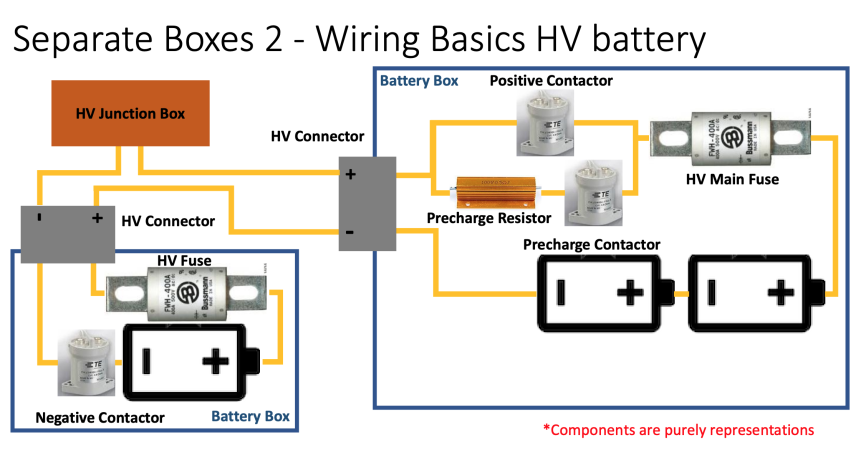High Voltage Safety
This page is currently in early development
High Voltage batteries can be very dangerous to work with, so this is a non exhaustive document of safer working processes, always be sure you're competent and aware of the risks and how to mitigate them. Anything you undertake, you do so at your own risk. Batteries are Direct Current (DC) so this wiki page will concentrate on DC as opposed to Alternating Current (AC) as typically found in household outlets.
What is considered high voltage?
The Occupational Safety and Health Administration (OSHA) warns that voltages over 50V pose a shock hazard and for DC, 60V is often cited as the voltage where electrocution becomes possible under worst-case conditions.
https://electricalengineeringx.com/what-is-the-safe-limit-of-dc-voltage-for-humans-to-touch/
OEM high voltage batteries are currently typically around 350-400V though some are moving up to higher voltages of 800V. Very few DIY conversions are currently using voltages as high as 800V for the most part, so this page will concentrate on the ~400V range. As the voltages increase the conductivity of materials increases so, make sure you're aware of the risks and safe working practices.
Risk Assessment
When working with HV your first step should be to do a risk assessment, https://www.hse.gov.uk/mvr/topics/electric-hybrid.htm. The section under Working on high voltage electrical systems is of particular interest. Once you've identified the risks, think about how you will mitigate the risk of occurrence, be that protective equipment or working processes.
General Safe Working Guidance
In general before working on your project, you should where possible isolate the HV source, confirm this with reliable tools and put in place a system to prevent it inadvertently becoming live again. How this is done may vary depending on the project, but it could be removing the safety disconnect and locking it in the glove box, unplugging the HV battery etc. Always confirm with known working measuring equipment and be aware some components have large capacitors so voltage may remain present for some time after disconnecting.
When it's not possible to isolate the HV source, for example when working the the battery, make sure anyone with access to the work space is aware of the dangers, limit the the access, make sure its clear and clutter free. Signage and warnings where appropriate, this is where your risk assessment comes in to play.
Splitting the battery pack by removing bus bars/series connections to lower the voltages you're working with is also a consideration, using appropriate tools and protective equipment as your risk assessment calls for.
Wiring Basics HV battery
Caution
- These are to be used as guidance and not as a direct how to
- Use the appropriate tools when working on HV
- Before commencing any work make a system safe
- If in doubt do not start work but seek advise
Battery Box – A structure that houses the batteries and other HV related components. Can be made up of sub assemblies, when mentioned here it refers to the assemblies as they will be installed into the vehicle.
Design Requirements
- A fuse is fitted to every battery box, this is there to protect the HV cables running out of the box.
- A battery box should never have two live cables coming out when being installed;
- HV Contactor inside the battery box which disconnects one end of the battery
- Service disconnect which can be removed and installed with the pack in place on the vehicle

